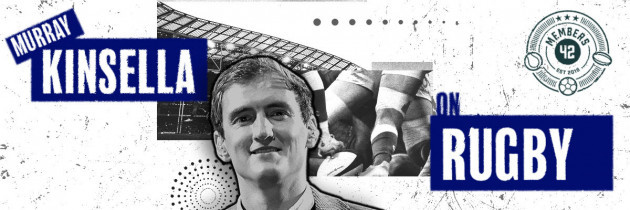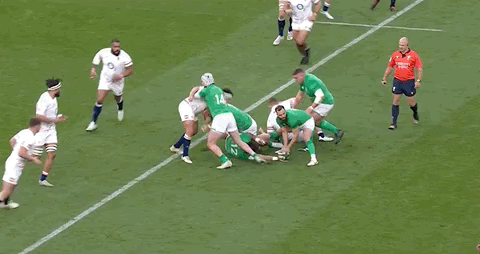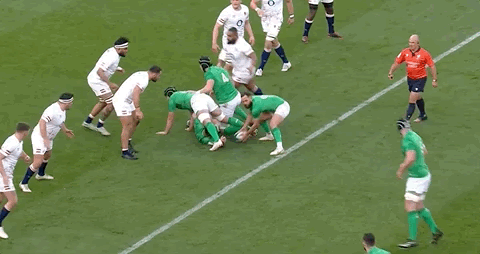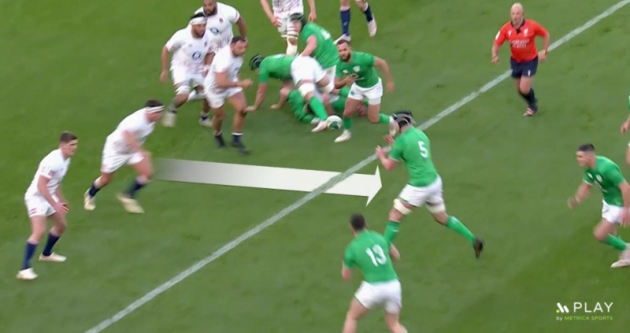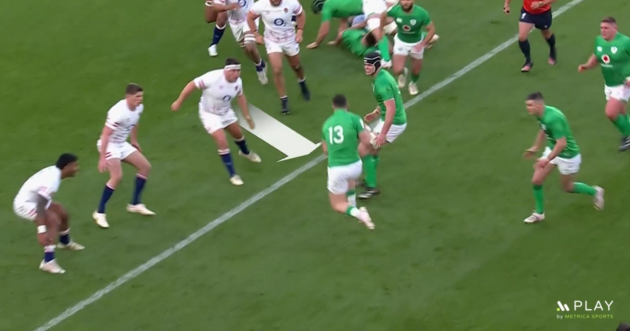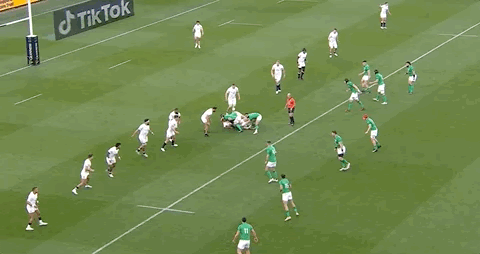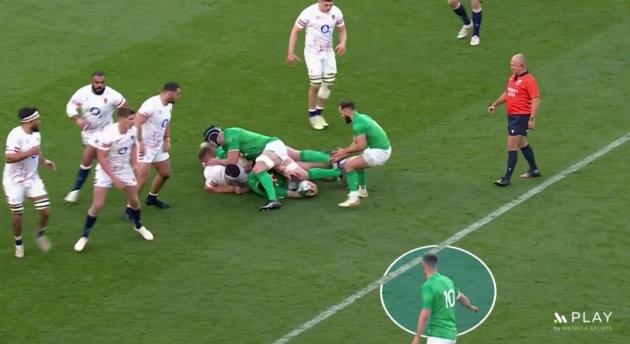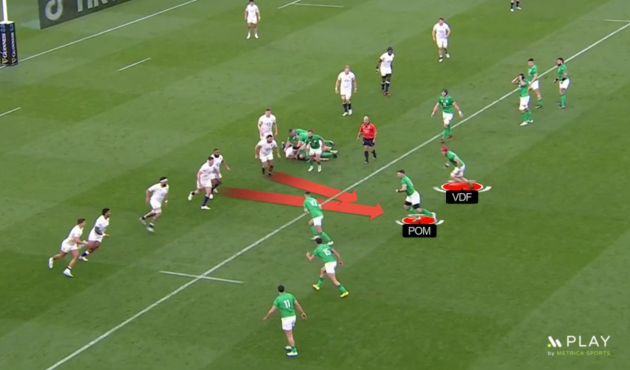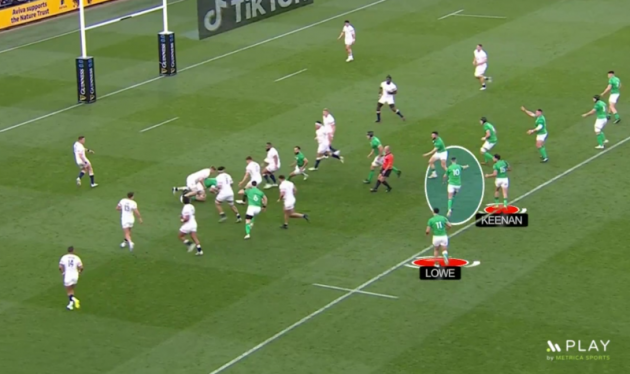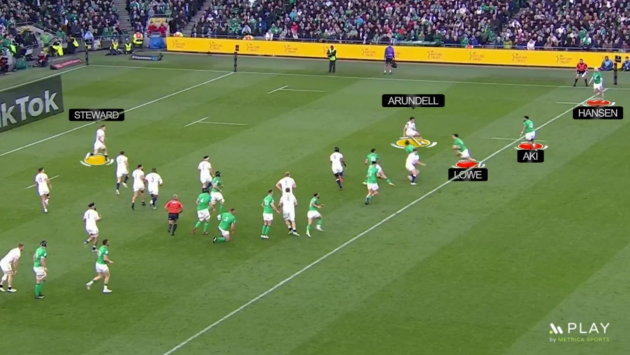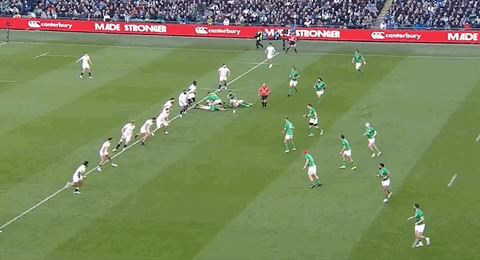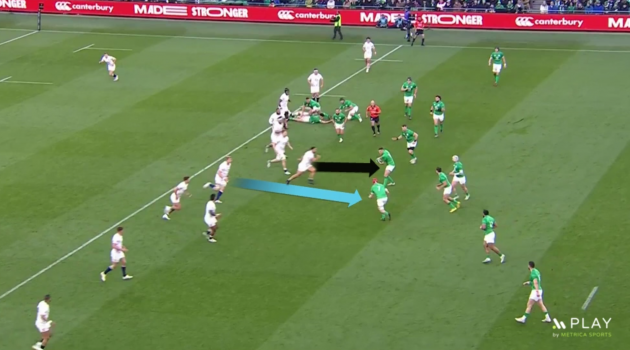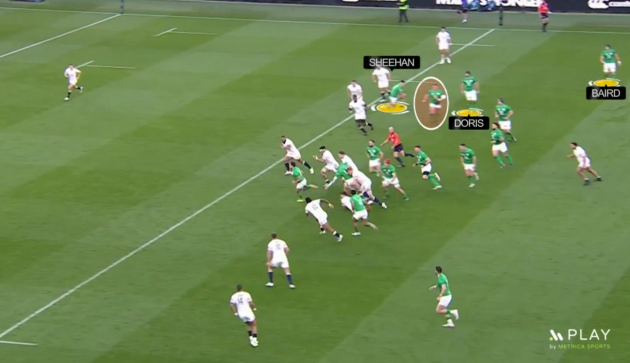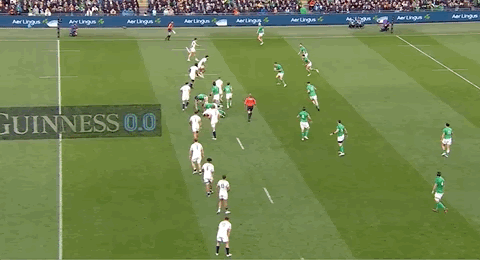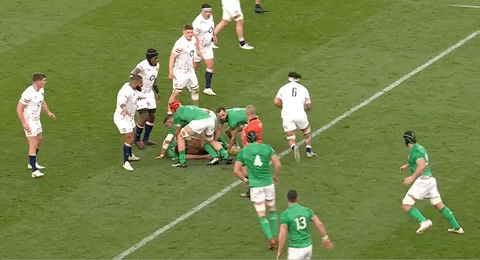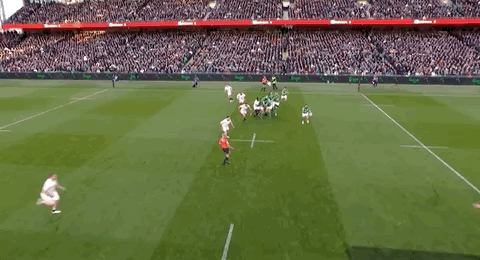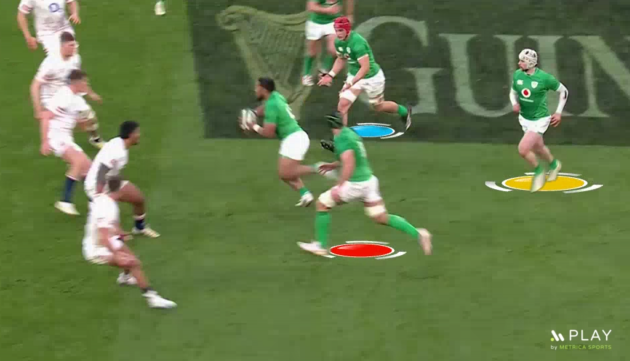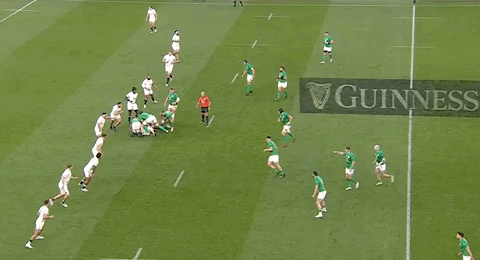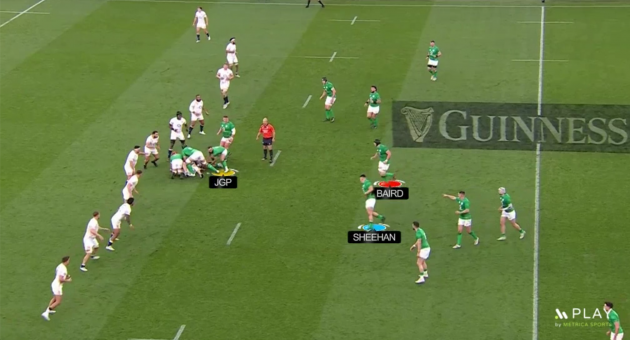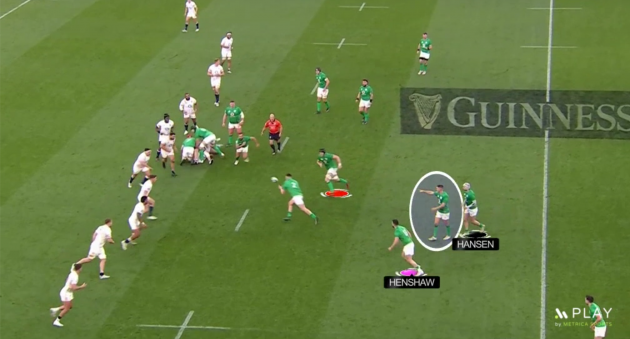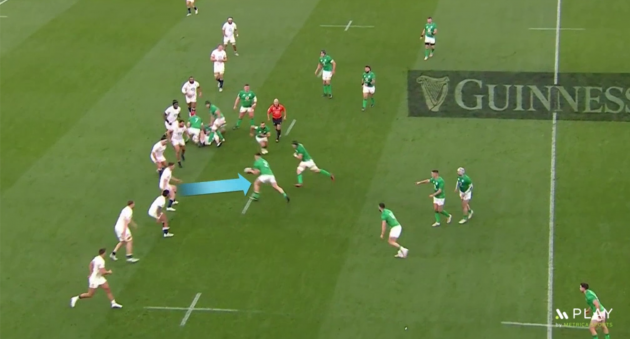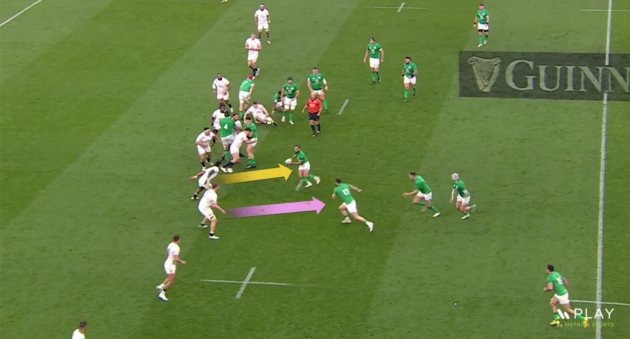ONE CAN ONLY presume that Ireland’s players haven’t spent too much time thinking about last Saturday’s game in any great detail yet. The Monday session is usually a big favourite so they’re likely to have been busy right through until this morning.
Whenever Ireland do reflect on their Grand Slam-sealing win over England, they’ll understand even more that the game never should have been as fraught as it became in the third quarter. Ireland could have been well in control by then. One of the things that excites this Ireland squad is their belief that despite winning a Grand Slam, they left a huge amount behind them in terms of performance. The England game is a prime example.
They made a stuttering start in attack as England flanker Jack Willis earned a breakdown steal. The Irish forwards soon botched a lineout when there was a mix-up with the call and James Ryan had no front lifter. But Ireland were motoring in more familiar fashion by the 11th minute as they nearly created the opening try in the 11th minute.
Bundee Aki launches the attack with a direct carry off Johnny Sexton from a lineout on the right, then Dan Sheehan shows his compelling blend of footwork and power with a carry around the corner.
England prop Kyle Sinckler has Sheehan lined up but the Ireland hooker’s footwork so late and despite moving forward at such pace is superb. Sinckler still drops him but Sheehan is over the gainline and a big clearout from Caelan Doris and Ryan Baird adds another metre to the progress.
Their clearout also means lightning-quick ball for Robbie Henshaw to carry next.
It’s simple enough stuff but there’s detail even within the phase above.
Note how the presence of James Ryan as an option off scrum-half Jamison Gibson-Park attracts England hooker Jamie George’s focus initially.
But Gibson-Park skips his pass straight across the face of Ryan, who has his hands up in a bid to further attract English focus.
As Henshaw instead receives the pass, George now turns out to the Ireland centre.
As we can see above, George has to adjust laterally and then plant his feet, meaning Henshaw can dominate the collision and just about get over the gainline. Sexton darting behind Henshaw is also important because he concerns the defenders outside George even just briefly.
With Tadhg Furlong then making a big dent in clearing George away at the breakdown, it’s more lightning-quick ball for Ireland.
When a team has had three consecutive breakdowns lasting only 2 seconds each, good things often happen and that’s the case here for Ireland on the next phase.
Even before Sexton receives the ball from Gibson-Park here, we can see him signalling for Peter O’Mahony and Josh van der Flier to set up on his inside.
The genius of this play is that O’Mahony is the obvious recipient of Sexton’s inside pass and he draws both Sinckler and Ellis Genge as Sexton carries the ball to the line.
But again, the Irish pass goes right across the face of the more obvious target and van der Flier is suddenly running into space.
It takes a superb stretching tackle from Willis to deny van der Flier a one-on-one chance against England fullback Freddie Steward in behind, but Ireland have more momentum as O’Mahony, Ryan, and Henshaw hit the breakdown.
As van der Flier is being tackled, we can see Ireland setting up for the next phase. First, Furlong gets off the ground and nominates himself as the central figure in what will be a pod of three forwards to the right of the breakdown.
A split second later, Sexton is on the move and signalling for that pod of forwards to set up in front of him, while left wing James Lowe and fullback Hugo Keenan also get into motion over to Ireland’s right outside Sexton.
Ireland’s passing is fluid as Gibson-Park hits Furlong in the middle of the 3-pod and he sweeps the ball out the back to Sexton, whose rapid catch-pass under pressure is superb.
The pod of two forwards in front of Keenan, made up of Sheehan and Andrew Porter, ends up ahead of the ball but the Irish fullback swiftly shifts it onto Lowe and the chance beckons for Ireland.
With Aki and Mack Hansen lying in wait outside him, it briefly looks like the try might come here.
With clear space in front of him, Lowe understandably steps on the accelerator and runs into it. It’s easy with the benefit of freeze frame and multiple replays to wonder if he could have instead shifted a pass at the moment above straight to Aki, giving him and Hansen and chance to finish.
As we can see, Steward is working across in the backfield, so there is another viable defender covering behind, but it’s certainly a chance.
Having taken three more steps forward, Lowe realises the ball needs to go and tries to pass it in behind the turning Arundell, but the English left wing is able to bat the ball down for the turnover and the chance is gone.
It’s George who falls on the loose ball and he’s immediately penalised for crawling on the ground. It means another opportunity for Ireland from the five-metre penalty but Sexton is held up over the tryline after deciding to take a quick tap.
Sexton goes close but Itoje, Farrell [put onside by the advancing Itoje], and Dombrandt in particular do a fine job of denying him.
It would be interesting to hear Sexton reflect on his decision here, but he backed his instinct on the pitch with Ireland on top of the English and unfortunately for him it didn’t work out.
Ireland made another error on their now familiar goal-line restart play – the one Keenan scored off against France and which they’ve used in each game since – and they’re soon trailing 6-0 after a second English penalty.
Their response was extremely close to being a try but they butchered a huge chance. The passage begins with Sexton dropping a superb restart close to the right touchline, where Itoje spills it and Ireland lock Ryan falls on the loose ball.
Keen to strike quickly, it’s O’Mahony who plays scrum-half just before Gibson-Park arrives.
Again, we see Sheehan’s impact as a ball-carrier. He accelerates outside England lock Dave Ribbans and then dummies a one-handed pass to Caelan Doris to beat Genge, only for Ribbans’ despairing tap tackle to ground him. Sheehan drives up off the ground to eke out another couple of metres as Doris and Furlong resource the breakdown.
It’s Keenan who cuts England on the next phase.
As is so often the case, Ireland are well organised around Sexton here.
O’Mahony provides the inside pass option that England have to respect, while van der Flier [blue below] is ready to run the front-door option for Sexton as Keenan and Hansen swing in behind.
England’s defensive line is disjointed as Ribbans is still retreating when Ireland play, but they should still be able to manage the Irish attack.
Genge goes hard after Sexton [black below] in a bid to stop the ball but he fails, while Ribbans then bites down on van der Flier’s line [blue], as he must because England know that Ireland do regularly use that front-door option.
Sexton goes out the back to Keenan and at this point, England centre Henry Slade really needs to be closing up and in on the Irish fullback, as indicated below.
Slade appears to think Ribbans will swim past van der Flier and be able to target the ball, but there are more than enough defensive bodies outside Slade for him to be aggressive in this instance.
By the time Slade does turn in, it’s too late to land a shoulder on Keenan, who flashes past him with a left-handed fend, while Ribbans ends up tackling Hansen off the ball in his desperation after initially sitting down on van der Flier.
Keenan is tackled by England scrum-half Jack van Poortvliet about five metres out from the England tryline, but Ireland should score on the next phase.
The camera angle above doesn’t do the opportunity justice, but if we go back to the moment when Keenan has just broken, we get an appreciation for what’s outside Furlong.
The tighthead is circled in red, while Sheehan, Doris, and Baird are all over on the side of the pitch. That means that when Furlong gets the ball, he has those three Irish players outside him. If he draws and passes, it’s a 3-on-1 for Doris, Sheehan, and Baird against the exposed Arundell. A gilt-edged chance.
Furlong is renowned for his passing game, of course, but he lacked his usual high level of rhythm in this game, understandably after such a long period out of the game recently.
He’s perhaps not helped in this instance by Doris setting up so flat to him, forming another of those 3-pods in a situation where Ireland just needed to play through the hands in the most basic manner to finish.
As it transpires, England’s defence can recover and Ireland turn the ball over a few phases later as Lowe throws a no-look pass to van Poortvliet when Ireland had managed to create a hint of space wide on the right again.
Ireland’s next attack yields three points despite O’Mahony spilling Furlong’s tip-on pass backwards, but there’s soon more frustration as Furlong loses the ball to ground while slightly forcing an offload attempt and Sexton can’t scoop it up.
In the 25th minute, there’s a really positive passage of Irish attack. It starts with Mack Hansen making a good decision to run the ball out of his own 22.
Owen Farrell is chasing his own kick and is totally isolated, so Hansen backs his footwork and acceleration to step around him and into the clear space behind. The Connacht man then breaks Itoje’s tackle attempt before finally being hauled down near Ireland’s 10-metre line.
Two carries from O’Mahony and van der Flier follow before Ireland move the ball wider to their right.
It’s a classy half-break from Henshaw, who benefits from a crisp Sexton pass that allows him to accelerate to the outside of Manu Tuilagi, fending him as he goes and only getting stopped by Arundell scragging him from behind.
Ireland are now well and truly in behind the English defence and a penalty arrives two phases later as Sexton is tackled late by Dombrandt.
Earning a penalty goes down as a resounding success for an attack that started in their own 22 and Ireland kick down the right touchline into England’s 22. Again, they leave empty-handed.
Their maul is repelled and then Hansen is hammered as he runs a short line off Gibson-Park, meaning Ireland initially struggle for forward momentum. An explosive carry from Ryan into Genge gets them going again, but Ireland then lack patience as they force the ball wide too early.
It’s a loss of nearly 10 metres as Keenan is chopped down by Lewis Ludlam and Ireland compound that on the next phase.
Doris draws Slade and looks to tip the pass on to Baird, but the Irish lock isn’t expecting the ball and knocks on. It’s a big defensive win for England and they celebrate heartily.
Again, it would be interesting to be privy to Ireland’s review of this passage, particularly their decision-making around moving the ball wide.
As it is, Ireland’s next flurry of attack yields Sheehan’s game-changing try, a stunning set-piece strike from a lineout on the left.
And they will probably feel they could have had another just before half time and just before Steward’s red card.
This attack comes from a lineout on the right and Sexton calls the play “50 Rock”. It’s one we’ve seen from Ireland before and it begins with a five-man lineout delivering off the top for Aki to carry in midfield.
It’s a positive first carry from Aki and once again, the detail around the carrier is useful.
As we can see below, Aki has a tip-on option in Doris [red], a back-door option in Hansen [yellow] and even a tip-in option in van der Flier [blue], who has his hands up calling for the ball.
These options create hints of indecision in the English defenders, who have lots to consider, and Aki can use his power to dominate the contact through Farrell’s inside shoulder and into Willis’ tackle.
Van der Flier clears Willis to ensure a rapid recycle, with Doris acting as guard over the ball, which is swiftly moved away for the strike on second phase.
It’s a beautiful bit of play.
Sheehan and Baird are the two Irish forwards who come around the corner after their involvement at the lineout. Gibson-Park is obviously key to the play too.
As Gibson-Park passes to Sheehan, we can see below that out-half Sexton is totally disconnected from the hooker. It’s very much deliberate.
Sexton is pointing as if to tell Sheehan to carry hard off Gibson-Park here, as he has done a few times already in this game. Ireland want England to think that it’s a simple one-out carry because it makes the actual play all the more effective.
Henshaw and Hansen are tucked alongside Sexton and neither of them are a possibility to accept a late pass out the back from Sheehan, although Baird is an option for the inside pass, which Ireland want England to worry about again because it takes England’s eyes away from Gibson-Park.
Aware of the disconnection to Sexton out the back, Farrell commits wholeheartedly in on Sheehan when England hooker George actually has him covered just inside Farrell.
But Sheehan has no intention of carrying and instead drops a delightful return pass to Gibson-Park, who has scurried backwards and across the pitch to accept the vertical pass from Sheehan.
Farrell’s decision to bite in now causes a chain reaction as the trio of Irish backs are trigged by Gibson-Park getting the return pass.
Tuilagi has to turn in on Gibson-Park [yellow below], meaning that Dombrandt has to worry about Henshaw running short off the Irish scrum-half [pink].
Gibson-Park sweeps the ball out the back of Henshaw to Sexton.
With Dombrandt having been attracted in by Henshaw, Slade has already made the decision to turn in on Sexton [purple below] even as Dombrandt tries to push out off Henshaw late.
Sexton does a superb job of eyeballing Slade to further lure him infield and he releases the ball to Hansen in a 3-on-1 out on the left edge.
Hansen may have considered a rapid catch-pass to Keenan outside him in the split second he gathers the ball, but England right wing Anthony Watson is a big intercept threat in that space, so Hansen instead opts to bring the ball in behind Watson and attempt the offload.
It’s quite a favourable situation for the one-handed offload but Hansen just loses control as he extends his right arm back out to offload and the ball goes forward to ground.
If the offload goes to hand, Keenan and Lowe are heading for a 2-on-1 against England fullback Steward.
George is working underneath from the inside of the ball, but the England hooker is unlikely to have the pace to get to Keenan. Meanwhile, left wing Arundell is on the far side of the English posts and even with his speed, would struggle to get to Lowe if Keenan puts him away.
But the ball goes to ground, the Irish chance is gone, and Steward and Keenan collide horribly.
Ireland will tuck 50 Rock away for the World Cup or maybe work a variation into the play, but they will view this as another example where they could have pulled further clear of England before the break.
They still had a 10-6 lead but endured a nervy third quarter before settling themselves to produce an excellent try for Henshaw and then finishing over the top of the 14-man England.
A Grand Slam secured but lots of scope for improvement is a happy place for Ireland to be with a World Cup now looming large.
